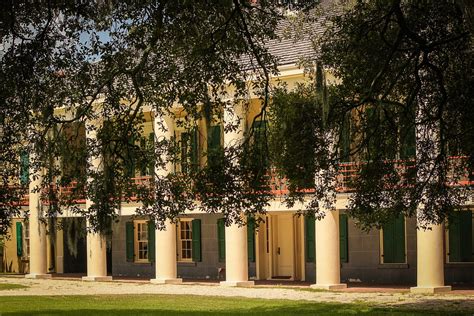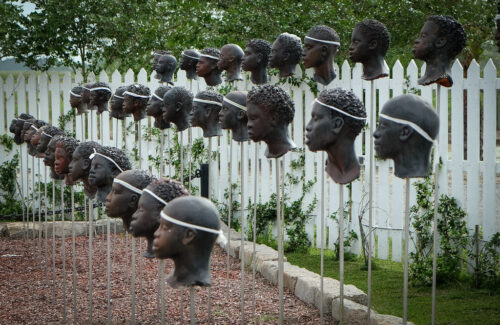The Best Plantation Tours To Take Near New Orleans - A guide from a local
When you think of the Big Easy, you might picture yourself dining on spicy Creole cuisine, partying it down at Mardi Gras, or making your way through the narrow rues of The French Quarter. What you may not know, is that a historic plantation tour is also one of the most unique things to do in New Orleans!
Plantations are central to NOLA’s culture because the wealth that built The French Quarter and Garden District all came from the exploitation of slaves. Tours explore the area’s former working estates and offer a look at the lives of enslaved workers, local landowners, and prominent Southern families and how this type of labor and agriculture helped shape New Orleans culture.
So, which New Orleans plantation should you tour?
Picking the right tour doesn’t necessarily mean choosing a location close to your hotel. This is because many of these estates are over an hour’s drive of The French Quarter or Garden District, where most tourists stay.
Don’t worry, we’ve got you covered! These are the best plantation tours in and around New Orleans and how to get there-
How to Get to Plantations Near New Orleans
Although most estates are about an hour’s drive from the city, getting to your tour is relatively easy, with a few different options.
Here’s how to get your plantation tour near New Orleans-
Rent a Car
If the idea of being jammed on a bus with a bunch of strangers doesn’t sound good. Another option is to rent a car. If you don’t mind driving, renting a car is a convenient option, especially if you plan on exploring not just plantations but all the fun day trips you can take from New Orleans. Renting a car gives you the flexibility to travel on your own time and pace.
This is an advantage over guided tours and shuttle buses, which start and end at specific times and follow strict itineraries. If you plan to drive yourself, note that making reservations in advance is critical because tours often sell out, especially during the busy season.
All major car rental agencies operate in the city, including at the Louis Armstrong New Orleans International Airport. Click here and check out discover cars to find the best deals on car rentals
Tour Bus
Numerous tour companies in New Orleans offer guided plantation tours that include transportation. These tours almost always provide round-trip transportation from designated meeting points or top hotels in New Orleans to the plantations.
The reasons to book a guided tour are simple. Booking a guided tour allows you to sit back, relax, and enjoy the journey, while an expert gives you insights and highlights of the plantations!
Check out our overview of different tour bus options below.
Cajun Encounters
Cajun Encounters does a great job fitting in two very different plantations in one day. This tour lets you visit the Creole-style Laura Plantation and the Antebellum Oak Alley. Your guide will show you the highlights and history of each site, plus Louisiana’s natural landscape as you drive from New Orleans.
The prices for Cajun Encounters tend to be higher than others on this list but keep in mind their tour includes a guided tour of two plantations. One thing that tourists love about Cajun Encounters is that they have pickup services from popular French Quarter hotels.
Gray Line New Orleans
Gray Line is a tour company chain with a solid reputation throughout the US, and they’ve certainly treated New Orleans well. You can choose between the Laura, Whitney, or Oak Alley and leave from a convenient meeting spot in The French Quarter.
Like the Cajun Encounters tour above, Gray Line has an option to go through two plantations in one day. This tour allows you to choose between the Whitney, Laura, and/or Oak Alley plantations. You could also take Gray Line’s Plantation/Swamp Tour combo and check off two of Southern Louisiana’s great wonders (gators and plantations!) in one day.
A Brief History of Plantations Near New Orleans
The history of Southern Louisiana’s plantations is deeply intertwined with the area’s complex, muddied past.
These plantations were at the center of the Antebellum era, producing crops like sugarcane and cotton and relying heavily on slave labor. Slavery, in general, is a controversial part of American history, and it’s no secret that enslaved individuals lived harsh, short lives.
At the same time, these grand estates, with their opulent mansions and oversized gardens, represented the wealth and social status of the plantation elite. Modern society tends to romanticize these mansions, but the reality for most of its residents (slaves) was not sweet.
The Civil War and the abolition of slavery ended this lifestyle, and very few plantations remain. Today, the surviving estates remind visitors of a complex and often painful history, giving everyone an opportunity to learn about the lives of those who lived and worked there.
Closest to the City: Destrehan Plantation
Style: Greek Reval, French Colonial, Antebellum
Distance from New Orleans: 23 miles
Tour information: Destrehan Plantation Tour
Address: 13034 River Rd, Destrehan, LA 70047
Destrehan Plantation is the closest plantation to New Orleans, making it one of the most popular choices.
Situated on the banks of the Mississippi River, Destrehan Plantation is one of the oldest plantations in the state, created in 1787. The guided tour explores the plantation’s history, architecture, and role in the sugar industry.
The plantation was owned by Jean-Noel Destrehan, who was one of the most prosperous sugar barons during the antebellum period. It also happens to be one of three sites where trials took place after the 1811 German Coast Slave Revolt, a largely hidden part of US history.
Fun fact: The beloved New Orleans cult classic, Interview with the Vampire, used parts of the Destrehan’s decadent interior for filming.
Most Filmed: Oak Alley Plantation
Style: Greek Revival
Distance from New Orleans: 54 miles
Tour information: Oak Alley Foundation
Address: 2247 LA-18, Vacherie, LA 70090
Oak Alley in Vacherie, Lousiana, is one of the most commonly visited plantations because it is beautifully preserved and iconically Southern antebellum.
On the West bank of the Mississippi River is a Louisana plantation that’s worn many hats over the years, known as Oak Alley. From a sugar plantation to an (almost) investment, a cattle ranch, and more-Oak, Alley has over 200 years of rich history.
Today, the plantation is a museum of its former selves, with a carefully preserved record of each chapter in its history. The Alley is absolutely gorgeous, lined by a breathtaking avenue of ancient oak trees that lead up to the striking Greek Revival manor. The property gets its name from its 28 columns that symbolize the 28 oak trees in the pathway leading up to the plantation. These iconic white columns peeking out from the oak trees are one of the best places to grab photos near New Orleans.
Oak Alley’s history, wise old oaks, and beautifully restored estate continue to captivate tourists worldwide, inviting them to step back in time and explore a significant chapter in Louisiana’s history.
The Oak Alley Plantation in Popular Media
With its good looks, is it any wonder that Oak Alley has appeared in several famous pieces of media and film? Look for the watchful columns and their oak counterparts here-
Interview with The Vampire
Netherworld
Nightrider
Red Dead Redemption 2
Book now for $69 includes a tour bus ride to the Plantation from the French Quarter
Run by Women: Laura Plantation
Style: French Creole
Distance from New Orleans: 51 miles
Tour information: Laura Plantation
Address: 3645 LA-18, Vacherie, LA 70090
Also in Vacherie is the bright yellow Laura Plantation, run by four generations of women.
One thing uniquely beautiful and equally profound about Southern Louisiana is the history of the land. The Laura’s timeline is a shining example of that-
For over a century, a Colapissa Indian Village thrived on beautiful, unspoiled wilderness. In 1804, a Frenchman named Guillaume Duparc came to own the land and built his massive sugar plantation, called l’Habitation Duparc, in the center of what was once the Indian Village. Duparc’s sugar farm would grow to over 12,000 acres at one point.
Today, the colorfully Creole Laura Plantation, renamed after a descendant of Guillaume, Laura Locoul, is a fully guided step through history. The tour includes looks at the Big House and its architecture, a walk through the gardens (Jardin Français, the kitchen potager, and BananaLand grove), plus the 12 buildings on the National Register, including animal barns, overseers’ cottages, 1840s slave cabins, and the Maison de Reprise.
Most Focused on the Lives of the Enslaved: Whitney Plantation
Style: Federal, French Creole
Distance from New Orleans: 47 miles
Tour information: Whitney Plantation
Address: 5099 LA-18, Edgard, LA 70049
Considered one of the most ethical tour options near New Orleans, The Whitney Plantation in Wallace, Louisiana, takes a unique and modern approach by exclusively focusing on the history of slavery. The Whitney is also considered one of the most popular locations to tour, and tickets sell out; advanced reservations are highly recommended.
Most plantations offer tours focusing on the beautiful architecture, gardens fit for royalty, and the lives of the slave-owning families who lived in luxury. The Whitney Plantation is notable in that it’s the only plantation museum in Louisiana that focuses exclusively on the lives of the enslaved, honoring the 350 people who once forcibly lived and worked there.
The Whitney’s museum is a profound and eye-opening experience. Through exhibits, restored slave cabins, and memorials, visitors gain a deeper understanding of the harsh realities of slavery while honoring the resilience and strength of those who endured it.
Touring the Whitney is one of the most powerful and impactful experiences near New Orleans. Take the plantation’s self-guided audio tour to explore at your own pace.
















